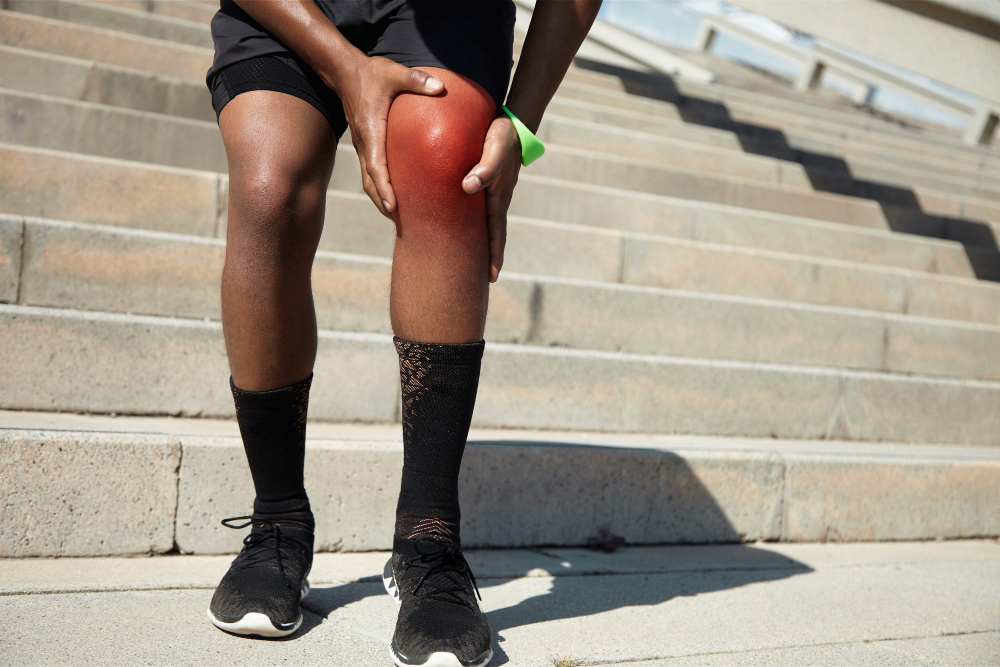What is Patella Dislocation? It’s a knee injury where the kneecap slips out of place, often to the side. This can cause pain and swelling. It’s common when the knee twists or gets hit directly.
Understanding the Anatomy and Occurrence of Patella Dislocation
Exploring what is Patella dislocation requires a glance at the knee’s structure. This joint is like a complex hinge where the thigh bone meets the shin bone, cushioned by the patella, commonly known as the kneecap. The kneecap plays a vital role in stabilizing the knee while amplifying the force of our muscles, aiding in movements like running and jumping. The patella glides through a groove at the thigh bone end, helping distribute pressure and protecting the knee joint.
However, sometimes the kneecap can slide out of this groove. This phenomenon forms the crux of what is Patella dislocation. When the kneecap pops out, it can lead to several symptoms.
- Signs of a dislocated kneecap:
- Sudden knee pain
- Swelling and unusual sideways movement
- A notable change in how the knee appears
Knowing these signs of a dislocated kneecap early is crucial. Quickly identifying what is Patella dislocation can prevent mishaps from becoming chronic issues. Unattended knee injuries could result in harder-to-manage long-term complications like frequent dislocations or osteoarthritis.
In India, active individuals, particularly those engaging in sports or dance, often encounter this injury. The lively use of the knees in such vigorous activities can pinch, pull, or push the kneecap out of its natural path, explaining why such injuries prevail in these circles.
Management and Treatment Options for Patella Dislocation
When tackling patella dislocation treatment, a few non-surgical options stand out. Athletes and active persons in India often lean on physical therapy and knee braces. Such treatments allow them to recuperate effectively without getting under the knife.
Patella dislocation treatment through physical therapy involves various exercises that enhance the knee muscles’ strength and flexibility, encouraging the kneecap back into its spot. Knee braces provide stability during recovery, easing the wearer’s mind through support.
Consider India’s sporting figures, who often bounce back thanks to dislocated patella management without surgery. Their stories and recoveries underscore how effective non-invasive treatments can be. However, when the kneecap just won’t keep put, surgical treatments come into play.
Surgery is needed when dislocations are recurrent or when natural alignment is deeply skewed and bothersome. Various surgeries can target these dislocations:
- Medial Patellofemoral Ligament Reconstruction: Repairs crucial knee ligaments.
- Osteotomy: Entails cutting and realigning bones for better joint configuration.
After undergoing surgery, a structured recovery plan is vital. Patella dislocation recovery time can span from months to a year, depending on several factors like the patient’s health and exact procedure performed. During patella dislocation recovery time, focus and effort on rehab exercises accelerate rehabilitation. For India’s active scene, returning to athletic endeavors often necessitates meticulous adherence to low-intensity techniques before ramping up.
Causes, Prevention, and Debunking Myths Related to Patella Dislocation
Now, understanding causes of patella dislocation is crucial. Several root causes come into view:
- Genetics: Inherited bone structures might make some prone by birth.
- Activities: Sports like basketball, dance, or other vigorous games elevate risks.
- Past Injuries: Previous knee injuries increase vulnerability.
Patella dislocation prevention is achievable with thoughtful actions. Focus on strengthening knee muscles to secure ligaments.
- Guide to patella dislocation prevention:
- Engage in balanced workouts
- Prioritize stretching and warming up
- Employ protective gear during high-risk actions
These efforts reduce the chances of facing what is Patella dislocation firsthand.
Meanwhile, myths often skew people’s understandings. One common belief might suggest that only athletes face such injuries. However, dislocations occur in anyone, regardless of their activity level. Another myth hints that patella dislocation treatment always requires surgery. Non-invasive measures can often create sufficient recovery.
By gently adapting activities to avoid unnaturally twisting the knee, everyone can lower their chances of dislocation. Empowered by correct knowledge, the path to prevention can align with safe lifestyles and routines.
Immediate Steps and Conclusion
When someone suspects a dislocated kneecap, acting fast matters. Here’s what to do straightforwardly:
- Stop moving and sit down
- Apply ice to reduce swelling
- Support the knee with a brace
Getting prompt, proper medical care cannot be overstated. Medical professionals ensure correct treatment unfolds promptly.
In conclusion, nurturing our knees means valuing their health continuously. Doing so with strategic prevention and trusting expert advice safeguards our joint wellbeing. If you’ve experienced this injury or have stories about recovery, consider leaving your thoughts below to foster our communally growing wisdom.
